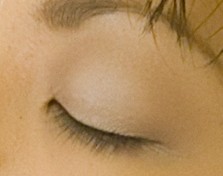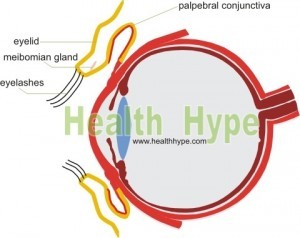Facts About Blepharoplasty (Eyelid Lift Surgery)
Whether it is a sagging upper eyelid or drooping and puffy lower lids, we would all like to restore our eyelids to their original youthful glory. The fact is that these age-related changes of the eyelids alters the appearance of the eyes and causes us to look older than we would like to appear.
Fortunately cosmetic surgery can easily correct these changes and restore youthful eyes within hours. Understanding what eyelid lift surgery entails as well as the risks and outcomes can help you make an informed decision before you go under the knife and fork out substantial amounts of money for the procedure.
IMPORTANT: Always have eyelid lift surgery (blepharoplasty) done by a medical professional with the skills and experience to conduct this procedure. It should be done within a suitable facility for minor surgery.
Skin Removal and Tightening
Blepharoplasty involves the removal of excess skin and tightening of the remaining skin on the eyelid. The purpose is to improve the look of the eyelids which may become droopy over time. The skin of the eyelids gradually lose elasticity with age and the action of gravity pulls on it thereby causing excess skin to grow.
This skin not only causes sagging which is not aesthetically desirable but can also impair the vision in some cases. Fat around the eyes may also bulge and further contribute to the sagging of the eyelids and puffy bags that form on the lower eyelids and below it. A blepharoplasty can also surgically correct the fat protrusion.
One Side Or Both Sides
Usually a blepharoplasty is performed on both sides simultaneously. This is known as a bilateral blepharoplasty. However, if only one side needs to be corrected then the other side may be left as it is. Overall it is rare for the eyelids on one side to sag and for the other side to be normal. The sagging may vary slightly on each side but to the untrained eye it is largely the same on both sides.
The upper eyelids or lower eyelids may be surgically corrected, or all four eyelids simultaneously. Another type of blepharoplasty, also known as the double eyelid lift, forms a crease on the upper eyelid. This is also known as the Asian blepharoplasty since it assists people who lack a crease on the upper eyelids, which is mainly seen in people of East Asian ethnicity.
Safe But Has Risks
A blepharoplasty is a relatively safe procedure. It is largely cosmetic surgery although when it is done to correct sagging that interferes with vision then it is known as functional blepharoplasty. Despite being quite safe, it is not entirely without risks. A post-operative infection and reaction to anesthesia are common risks of all types of surgery.
There is also the risk of temporary visual disturbances, dry eyes, scarring, incorrect positioning of the lower lift (malposition) and malfunctioning of the eyelids after surgery. Sometimes bleeding can occur behind the eyes which may lead to blindness but this is an uncommon occurrence.
Proper After Surgery Care
Proper post-operative care can minimize any complications that may sometimes arise with a blepharoplasty. This includes using a topical antibiotic cream on the wound and around it, using anti-inflammatory drugs as prescribed, applying cold for the first 48 to 72 hours and heat thereafter. It is important to follow the doctor’s advice closely.
Complying with the post-operative wound care regimen can also aid with a faster recovery. While swelling and pain goes does down within a few days, it takes at least 6 weeks for the wound to fully heal and the final changes in the eyelid to become evident. Being hasty in trying to speed up recovery or negligent by not following the doctor’s instructions can make the difference between a successful eyelid lift, or an unsuccessful procedure.
Not 100% Effective In All Cases
Many candidates for blepharoplasty have expectations of the surgery that are at times unrealistic. An ethical surgeon will not support unrealistic expectations but rather educate a person about what can be realistically achieved. Severe sagging of the eyelids and extensive bags under the eyes or puffiness with hollowing underneath may not be able to be fully corrected with surgery.
Dark circles around the lines, fine lines and wrinkles are also not removed with blepharoplasty. Even though a 100% restoration of the eyelids are not always possible, it does not minimize the value of eyelid lift surgery. It can achieve better results than any topical cosmetic product or non-surgical treatment many of which are actually quite ineffective.
Repeat Surgery May Be Required
The effects of blepharoplasty is not always permanent. While a lower eyelid lift generally provides lasting results and may not need to be repeated in the future, upper eyelid surgery may need to be done again in 5 to 7 years. The same contributing factors that led to the drooping of the eyelids in the first place continue to pose a problem even after surgery.
Gravity cannot be mitigated and neither can the aging process which led to the loss of skin elasticity on the eyelids. Some people also have a familial predisposition that may contribute to drooping eyelids, puffiness and bags under the eyes. Sometimes it is not advisable to repeat the same eyelid lift procedure in the future. Instead a repeat blepharoplasty may be done along with other procedures like a forehead lift.
No Alternatives To Surgery
Despite the host of beauty treatments and cosmetic applications on the market, there is no alternative to eyelid lift surgery. Some simple remedies can help with bags under the eyes but this is for acute puffiness. Once the bags become permanent, surgical procedures like blepharoplasty are the only option.
As stated above, the procedure is not always 100% effective in undoing the effects of aging especially in more severe cases. Other cosmetic procedures may also be necessary and repeat surgery may have to be considered in the future. Nevertheless a blepharoplasty can yield more significant and quicker results than any product or non-surgical treatment for restoring the youthful look of the eyelids.







